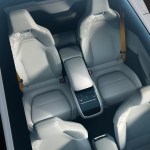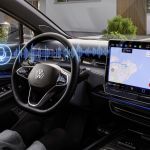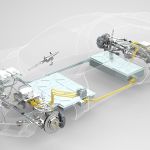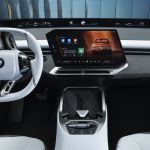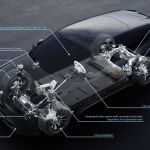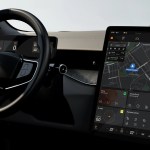In the lead-up to Auto China and the Beijing International Automotive Exhibition later this week, Elektrobit previewed two new technologies—related to operating systems and hardware accelerators—meant to accelerate the automotive industry’s push into software-defined vehicles. The company is giving demos of both at the event.
Open-source operating system for safety
The independently operated subsidiary of Continental today announced EB Corbos Linux for Safety Applications, what the company says is the world’s first open-source operating system (OS) solution assessed to be compliant with automotive functional safety standards.
With the solution, for the first time automakers and their suppliers can use Linux in safety-related high-performance computing functional domains such as applications for advanced driver-assistance systems (ADASs) and autonomous vehicles (AVs). The versatile solution can also be used in safety-relevant domains for other industries such as healthcare, machine engineering, and energy.
Corbos has received a positive technical assessment for the safety element out of context based on the two safety standards—ISO 26262 ASIL B and IEC 61508 SIL 2. Long the norm in other hi-tech industries, the impact of free open-source software in automotive has until now been limited by the industry’s strict safety requirements.
The solution comes with up to 15 years of maintenance to ensure security throughout the product’s lifetime—another industry benchmark. Additional key benefits of the solution include up to 50% faster time to market due to the faster development cycles with open source, resulting in significant cost savings. Open source further sets itself apart from proprietary software through its inherent transparency, flexibility, and security.
“This is a revolutionary step forward for automotive software,” said Mike Robertson, Chief Product Officer and Managing Director at Elektrobit. “Many in the industry have been striving towards this goal. We are proud to be the first to succeed in elevating software development and maintenance for safety-critical functions to a globally recognized standard.”
End users should see more and improved software-defined vehicles on the road soon, he said. Just like with their mobile phones, and Teslas for more than a decade, they will receive over-the-air updates to their vehicles over the entire life cycle, with carmakers able to deploy quickly and cost-effectively.
Leading technology companies, including Arm and Canonical, are collaborating with Elektrobit to accelerate the transformation towards software-defined mobility enabled by Corbos.
“The automotive industry is undergoing a massive shift with advanced driver experiences, electrification, and autonomy driving a need for more compute, software, and AI,” said Dipti Vachani, Senior Vice President and General Manager, for the Automotive Line of Business at Arm. “Safety is non-negotiable in the mobility sector, and Arm and other industry players collaborating with Elektrobit to fill the gap for a safety-certified OSS solution marks a significant milestone in the development of software-defined vehicles.”
“The introduction of EB Corbos Linux for Safety Applications, which leverages Ubuntu, marks a significant advancement in the field of software-defined vehicles,” said Bertrand Boisseau, Automotive Sector Lead at Canonical. “This innovative solution paves the way for the development of safer and more reliable vehicles, pushing the automotive industry forward.”
Corbos is now available for project integration worldwide.
Inside Corbos and software-defined value
In a preview of today’s announcement, Futurride was briefed exclusively at CES 2024 earlier this year by Dr. Moritz Neukirchner, Senior Director of Strategic Product Management for Software-defined Vehicle, at Elektrobit.
Neukirchner counts 15 different automotive OSes or software platforms, like the VW OS and GM Ultify, across OEMs, “and we as Electrobit don’t intend to go build a 16th one. What we do is we enable our customers to build these platforms themselves.” That’s where EB Corbos comes in, “as an automotive Linux distribution that gets the software maintenance that you need for this.”
That is important because maintenance is now mandated in Europe.
“It’s not only new for automotive; it’s new worldwide to have Linux operating systems with maintenance for up to 15 years,” he said.
UN ECE R155 mandates cybersecurity management and maintenance for 15 years after the end of production. The rule came into effect in 2022 for new type approvals and in 2024 for all newly produced vehicles.
Neukirchner says Porsche stopped selling the Macan in Europe because it won’t be able to provide cybersecurity maintenance for that model according to the rule.
“So, we are seeing the first impact that lack of proper maintenance models, especially with regards to cybersecurity now required to take products off the market,” he said. “That’s why launching EB Corbos Linux is such a game changer. It’s a distribution where you get this kind of maintenance over these long periods of time while still having access to the Linux ecosystem of available software and developers for this platform.”
More broadly, Neukirchner believes that a software-defined vehicle focus is about getting software to the end customer more quickly and “having a platform where developers are familiar with how you develop software for it, where you have a broad ecosystem of available functionality.”
When it comes to the ideal software-defined vehicle concept, Neukirchner believes Tesla is fairly far ahead because of the company developers’ mindset on delivering new value with software for vehicles that they’ve already sold.
“For me, this is one of the key differentiating points,” he said. “’Software-defined vehicles’ doesn’t mean I provide maintenance updates. It doesn’t mean I provide just security updates or bug fixes. [It’s about] providing new value delivery. We do see some of the OEMs catching up on it a bit.”
Elektrobit is looking to help in this regard.
Hardware accelerators for Classic AUTOSAR
Also being demoed at the Auto China/Beijing International Automotive Exhibition is the EB Zoneo GatewayCore. Announced last week, the company calls it the first software product to enable, configure, and integrate the new generation of hardware accelerators of modern microcontrollers for use in advanced automotive electrical/electronic architectures based on the widely adopted Classic AUTOSAR standard. It simplifies the configuration of complex networking gateway use cases, reducing time, integration efforts, and costs for OEMs and Tier 1 suppliers.
Zoneo GatewayCore bridges the gap that currently exists between hardware-dependent accelerators and Classic AUTOSAR, providing flexible support for complex routing scenarios. The integrated hardware-software approach significantly improves the processing latency of information and reduces central-processing-unit load and power consumption for network-related tasks.
The new software was developed in collaboration with hardware vendors including Infineon, which has made it available on its AURIX TC4x. On that hardware, it is capable of significantly accelerating controller area network (CAN)-to-CAN or CAN-to-IEEE 1722 routing in terms of latency with zero CPU load. This is achieved by using a combination of hardware blocks from Infineon and Elektrobit.
“Together with Elektrobit, we are saving carmakers and Tier 1s time and money so they can focus their resources on other aspects of vehicle development while benefitting from a faster, more efficient network,” said Lars Wemme, Senior Vice President of ADAS, Chassis & EE-Architecture at Infineon. “Our routing engines completely offload the MCU cores from data routing and keep resources for application code to our customers.”
The TC4x family of microcontrollers is said to push the boundaries in automotive microcontroller usage for safe and secured processing and is designed for next-generation e-mobility, ADAS, E/E architectures, and affordable artificial intelligence applications. The first TC4x engineering samples have already been shipped to lead customers for their design-in activities.
“Traditionally, a variety of tools must be used to configure the hardware-related and basic software-related parts in the AUTOSAR environment,” said Robertson. “With EB Zoneo GatewayCore and Infineon’s AURIX TC4x, we’re streamlining the process and making it easier for carmakers to introduce new vehicle functions that require high-speed, reliable, and secure in-vehicle networks.”
- EB Corbos Linux for Safety Applications is the industry’s first open source-based operating system for safety applications.
- Dr. Moritz Neukirchner is Elektrobit’s Senior Director of Strategic Product Management for Software-defined Vehicle.
- EB Zoneo GatewayCore configures hardware accelerators in AUTOSAR-based automotive EE architectures.

















